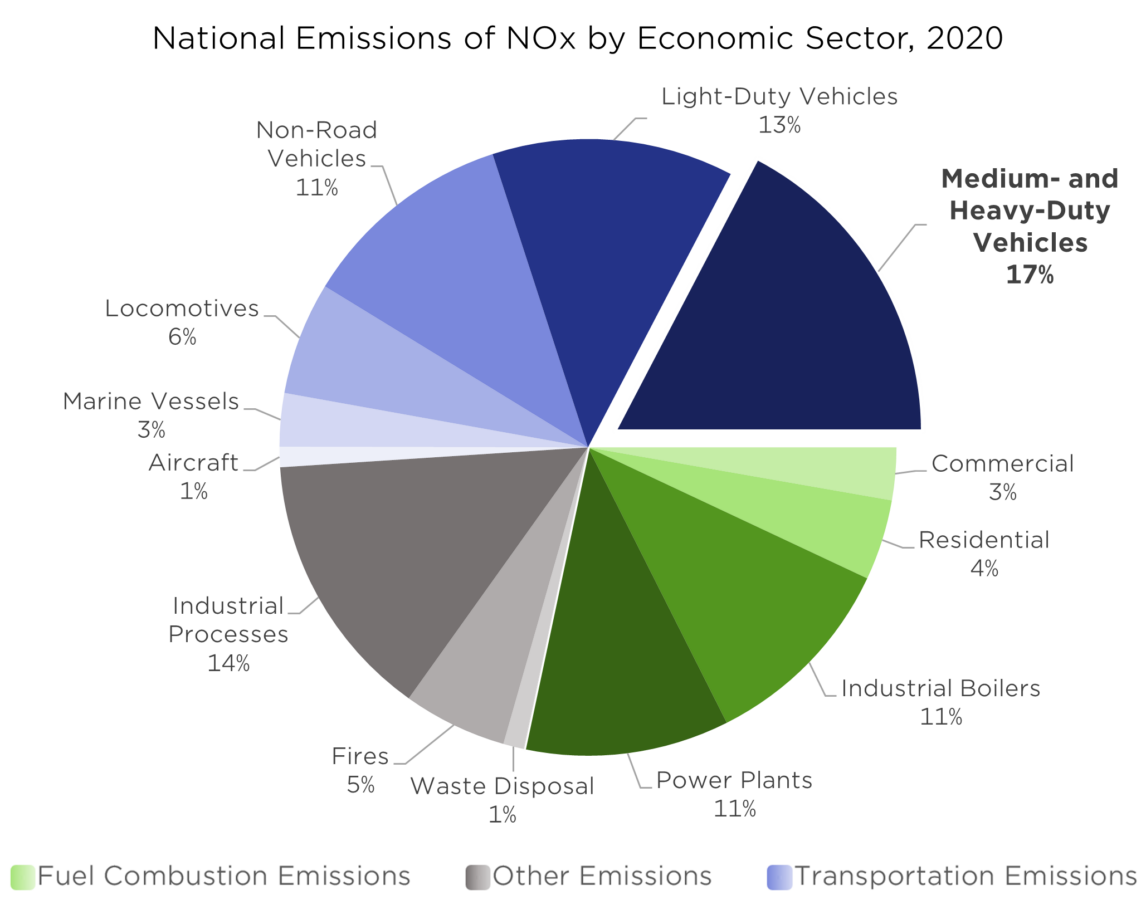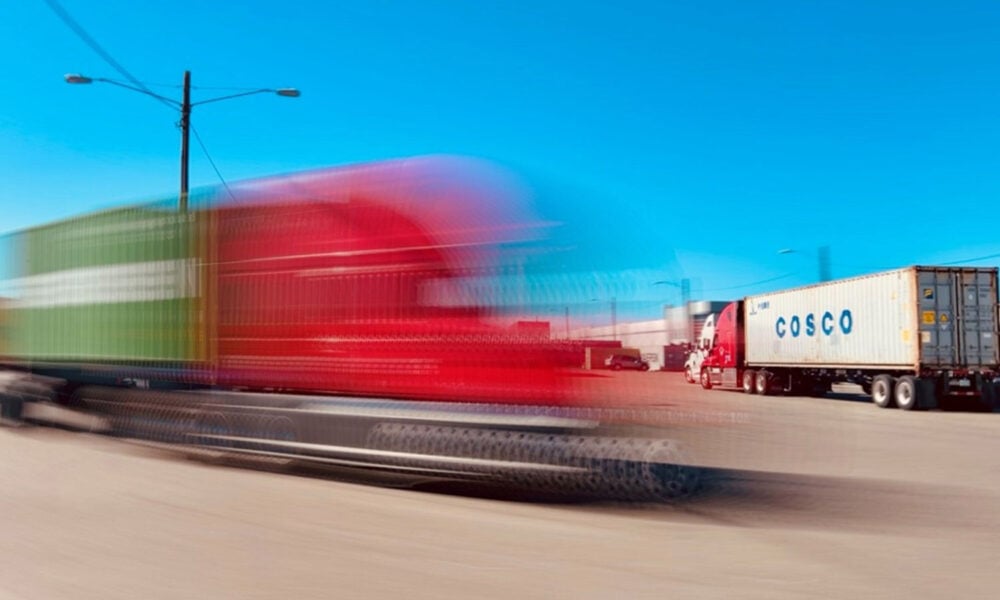If you’ve read any of my blogs so far, you’ve probably caught the gist of why accelerating the switch to cleaner on-road freight is critical to both improving air quality in areas struggling with the impacts of truck pollution and reducing climate-warming pollution from our transportation system. Yes, zero-emission trucks (ZETs) are ready for work and are being deployed in greater numbers each year, but this growth couldn’t have happened without parallel growth in the availability of these vehicles.
Not even a decade ago, ZETs – trucks that emit no tailpipe pollution – were largely concept vehicles deployed in limited circumstances and locations. However, these cleaner, more efficient, cost-effective workhorses are on the road in every state across the nation today. In fact, it’s likely that you’ve seen a ZET on the road, if not had a package delivered to your house by one.

This growth has been impressive, but it didn’t happen in a vacuum.
Regulations like California’s Advanced Clean Trucks rule (ACT) have been key to driving increased ZET model availability and deployment in the early years of on-road freight electrification and will be crucial to accelerating this in the coming years. ACT sets clear market signals for manufacturers building ZETs, utilities and businesses developing charging infrastructure, and the supply chain industry creating the components that enable this work.
ACT requires manufacturers to gradually increase share of clean trucks sold
After several years of working with a wide range of stakeholders from organizations like UCS to truck and bus manufacturers, the California Air Resources Board (CARB) adopted ACT in 2021. To date, 10 other states have also adopted the rule. ACT’s timeline began in California last year and has come online in five additional states as of this year. The remaining five states will implement the rule over the next two years.
The rule itself is pretty straightforward – it requires manufacturers who sell medium- and heavy-duty vehicles (MHDV) in these states to gradually increase the share of zero-emission truck and bus models sold through 2035. The rule does not place any requirements on consumers to purchase ZETs, does not prohibit anyone from operating combustion-powered trucks, and does not apply to truck dealerships, despite some misleading information from bad actors meant to undermine the rule.
ACT Zero-Emission Truck Sales Percentage Schedule
| Model Year | Class 2b-3 | Class 4-8 | Class 7-8 Tractors |
|---|---|---|---|
| 2024 | 5% | 9% | 5% |
| 2025 | 7% | 11% | 7% |
| 2026 | 10% | 13% | 10% |
| 2027 | 15% | 20% | 15% |
| 2028 | 20% | 30% | 20% |
| 2029 | 25% | 40% | 25% |
| 2030 | 30% | 50% | 30% |
| 2031 | 35% | 55% | 35% |
| 2032 | 40% | 60% | 40% |
| 2033 | 45% | 65% | 40% |
| 2034 | 50% | 70% | 40% |
| 2035+ | 55% | 75% | 40% |
Some have expressed fear that the Trump administration may try to dismantle the rule by attempting to revoke the waiver EPA granted to California to begin enforcing the rule. While this may be a reasonable conjecture based on this administration’s previous actions and his recent executive order targeting California’s authority to reduce pollution from automobiles, truck manufacturers entered into an agreement with California in 2023 committing to comply with ACT regardless of any legal outcomes at the state or federal level. Additionally, the manufacturers also agreed to only sell zero-emission models in California after 2036.
ACT provides flexible and feasible compliance pathways for manufacturers
Like other clean vehicle standards, compliance under the ACT is determined by a credit system.
Here’s the gist: Manufacturers are required to sell a certain percentage of ZETs among their total vehicle sales for each year, guided by ACT’s ZET Sales Percentage Schedule (see table above). ZET sales generate a certain number of credits for a manufacturer based on the number and types of new vehicles they sell each year. Manufacturers who sell more ZETs than their annual requirement generate surplus credits that can be traded or sold to manufacturers who did not meet their annual requirement.
However, there’s a key flexibility in the way compliance under the rule is measured. Manufacturers are allowed to meet their obligations over three consecutive years – this gives manufacturers additional time to prepare as the rule is first implemented in different states and make adjustments as the market for ZETs matures. This flexibility in timing is in addition to the four years manufacturers have had to prepare between the rule’s adoption and implementation in each state.
The rule also allows manufacturers to bank credits generated from ZET sales that occurred before the rule goes into effect. In California, for example, by 2023, manufacturers had already sold enough ZETs in the state to meet their 2024 requirements. Other states are likely to have met their requirements early as well. In Washington, ZETs represented about 10 percent of 2023 registrations of new MHDVs.
ACT is accelerating the availability of clean trucks at a critical time
By increasing the share of ZETs truck manufacturers are required to sell, ACT helps to expand the market for ZETs and drives down the upfront cost of these vehicles. This, in turn, will accelerate the deployment of ZET, allowing fleets to access the significant fuel and maintenance savings they deliver – estimated at around one-third of the per-mile cost of comparable diesel trucks. Fleets across states that have adopted ACT are expected to see billions of dollars in net savings over the next 25 years (see estimates for different states here).

The market is already moving toward ZETs, but ACT is set to significantly accelerate this transition, as well as the charging infrastructure to support these vehicles. In New Jersey, for example, ACT is estimated to increase the share of ZETs on the road in the state to around 16 percent in 2035, compared to less than one percent in the absence of the rule.
Upcoming UCS analysis shows that ZETs are being deployed in states that have adopted ACT at rates significantly greater than states that have not, suggesting that the rule has had meaningful positive impacts even before going into effect in most states. Again, ACT is all about creating clear market signals – and it appears to be working quite well.

This accelerated transition to cleaner on-road freight is vital to reduce harmful air pollution generated from trucks, given that they’re the largest source of ozone-forming nitrogen oxides (NOx) pollution in the nation and the largest source of lung-damaging fine particulates from vehicles on the road. Neighborhoods close to high volumes of truck traffic from ports, warehouses, and the like, bear the brunt of these negative health impacts.

Medium- and heavy-duty vehicles are the largest source of NOx pollution in the United States. These vehicles continue to be significant drivers of sickness from exposure to transportation pollution, particularly in areas adjacent to ports, warehouses, and freight corridors. EPA 2024
Additionally, emissions of climate-warming greenhouse gases from trucks are on the rise, up nearly 80 percent in the past 3 decades compared to a less than 10 percent increase among light-duty passenger vehicles. This is largely because efficiency improvements among light-duty vehicles have far outpaced that of MHDVs and the amount of goods transported by our on-road freight system has increased significantly in the age of e-commerce. Electrifying on-road freight is crucial to achieving not only healthy air for us today, but also a vital part of the work toward a healthy and habitable planet in the future.
ACT is a foundational part of a more sustainable future not only for people and the planet, but for the fleets that move our goods each day. Regulations like this create a clear and feasible path for manufacturers to sell cleaner, more efficient, cost-effective vehicles that keep our economy moving while reducing harmful pollution.

